December 10 - 13. DARJEELING Breakfast at our hotel was easy. The colorful Tibetan-style restaurant with ornately painted wooden details was bright and cheerful. The weathe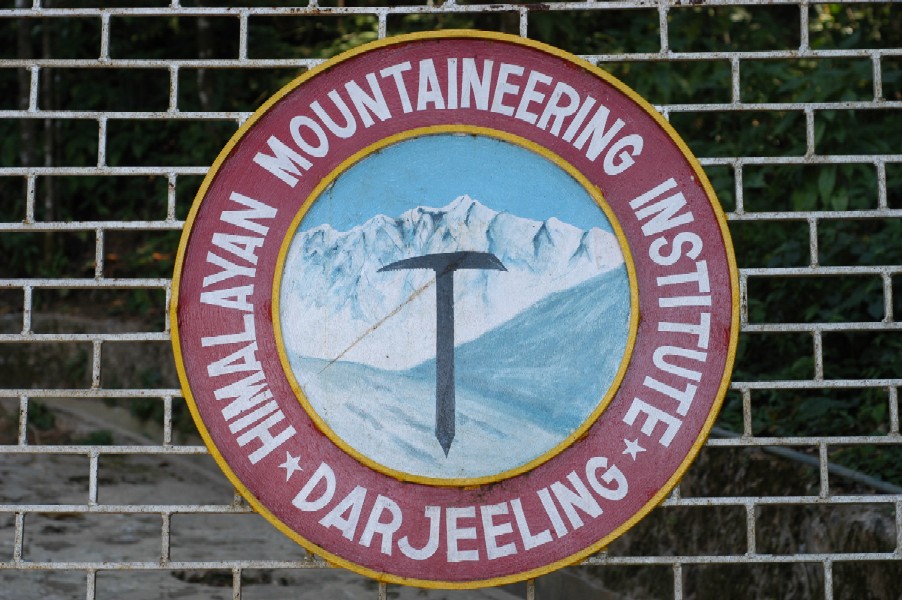 r was beautiful and walking around Darjeeling you had the feeling of being in some far off place, caught between times. The buildings were a jumbled mix of simple wooded shacks, bland concrete blocks, and colonial relics all snuggly packed together along narrow zigzagging streets bisected by the occasional set of stairs that offered more direct routes. Cars, fortunately, were limited to a handful of roads so getting around Darjeeling was mostly traffic free. Still the small streets could get plenty crowded with people doing their shopping and trading during the middle of the day. There was no getting around the fact that Darjeeling was a rather dirty place but it hardly topped many other cities we'd been to in India and the warmth of the place made up for its scrummy edges. The local population of over 100,000 people consisted of Nepalese, many of whom were of Ghurkha origin, Tibetans in exile, and Bengali Indians. The region around Darjeeling has been a Ghurkha stronghold in varying degrees since 1780, interrupted by the British occupation. The city itself was named after the nearby Dorje Ling Monastery and was originally established as a rest-and-recreation center for British soldiers, eventually becoming another tea growing area for the British empire. The surrounding hills were covered with hectares and hectares of tea plants and Darjeeling holds the world-record price for tea at $220 per kilo. The politically dominant Ghurkha population started to push for a separate state of Gorkhaland in the 1980s, culminating in riots in 1986. The result was a 1988 compromise that gave the Darjeeling Gorhka Hill Council a large degree of autonomy from the state of West Bengal. r was beautiful and walking around Darjeeling you had the feeling of being in some far off place, caught between times. The buildings were a jumbled mix of simple wooded shacks, bland concrete blocks, and colonial relics all snuggly packed together along narrow zigzagging streets bisected by the occasional set of stairs that offered more direct routes. Cars, fortunately, were limited to a handful of roads so getting around Darjeeling was mostly traffic free. Still the small streets could get plenty crowded with people doing their shopping and trading during the middle of the day. There was no getting around the fact that Darjeeling was a rather dirty place but it hardly topped many other cities we'd been to in India and the warmth of the place made up for its scrummy edges. The local population of over 100,000 people consisted of Nepalese, many of whom were of Ghurkha origin, Tibetans in exile, and Bengali Indians. The region around Darjeeling has been a Ghurkha stronghold in varying degrees since 1780, interrupted by the British occupation. The city itself was named after the nearby Dorje Ling Monastery and was originally established as a rest-and-recreation center for British soldiers, eventually becoming another tea growing area for the British empire. The surrounding hills were covered with hectares and hectares of tea plants and Darjeeling holds the world-record price for tea at $220 per kilo. The politically dominant Ghurkha population started to push for a separate state of Gorkhaland in the 1980s, culminating in riots in 1986. The result was a 1988 compromise that gave the Darjeeling Gorhka Hill Council a large degree of autonomy from the state of West Bengal.
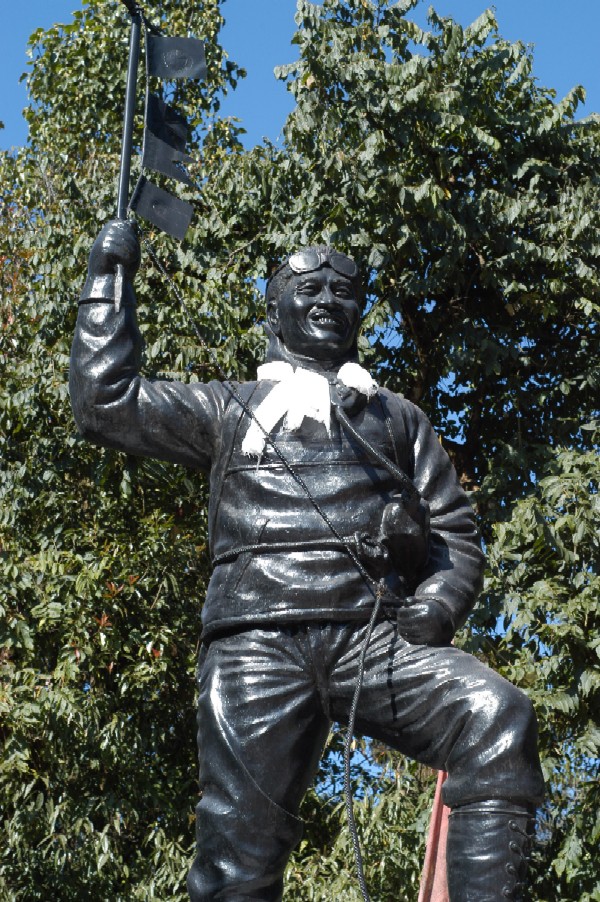 After squandering a day in Siliguri I was eager to get out and do some sightseeing. We'd had too many sedentary days of transit and were coming off of a rather low point in our India travels, Lakshadweep. Darjeeling was a refreshing change. We had absolutely no hassles and while life in the mountains is rough and rugged these people exuded such a hearty and happy spirit. It reminded more and more of my time in Nepal, a country that was already a prime tourist destination when I visited in 1993 but the people still maintained a culture of hospitality and friendliness. The steep streets of Darjeeling were great exercise and the views of the Himalayas were spectacular from the top of the ridge. Snow-capped Mt. Kanchendzonga was visible in the distance, the third highest mountain in the world reaching 28,208 feet. Considering were at 7000 feet in Darjeeling during December it wasn't that cold during the day. The snowline in the Himalayas was quite high. After squandering a day in Siliguri I was eager to get out and do some sightseeing. We'd had too many sedentary days of transit and were coming off of a rather low point in our India travels, Lakshadweep. Darjeeling was a refreshing change. We had absolutely no hassles and while life in the mountains is rough and rugged these people exuded such a hearty and happy spirit. It reminded more and more of my time in Nepal, a country that was already a prime tourist destination when I visited in 1993 but the people still maintained a culture of hospitality and friendliness. The steep streets of Darjeeling were great exercise and the views of the Himalayas were spectacular from the top of the ridge. Snow-capped Mt. Kanchendzonga was visible in the distance, the third highest mountain in the world reaching 28,208 feet. Considering were at 7000 feet in Darjeeling during December it wasn't that cold during the day. The snowline in the Himalayas was quite high.
We spent part of our first day applying for our Sikkim permit which was easy but required a bit of walking. It started with a visit to the Office of the District Magistrate on the downhill side of Darjeeling, beyond the jeep station and below Hill Cart Road. With the forms they gave us we had to walk up to the Foreigners' Registration Office, diagonally on the opposite side of town, uphill on Laden-la Road. They logged us and stamped our forms. Then we had to go back to the District Magistrate's Office to have the stamp put in our passports. There were no lines or fees so it went smoothly but we were out of breath. We scheduled our entry into Sikkim for December 15th after which we had 15 days to get in and out. 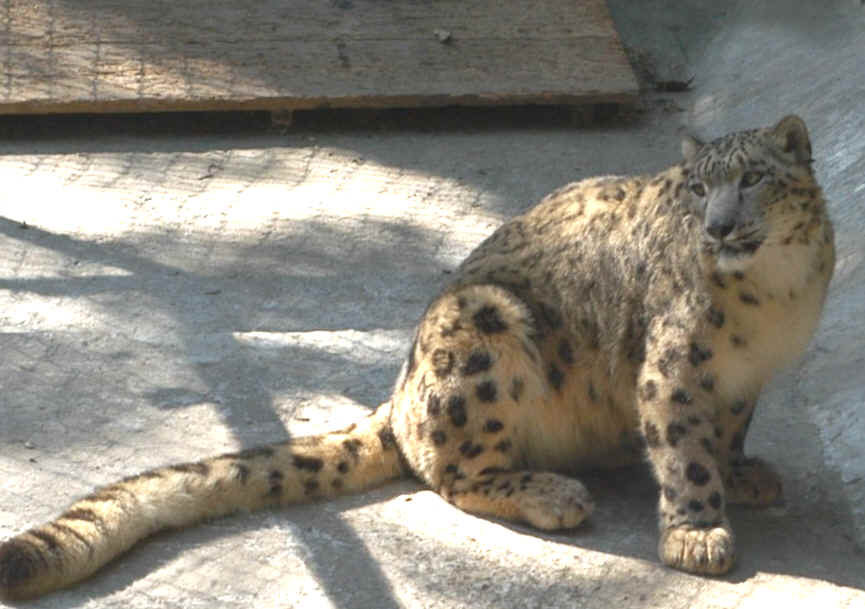
On our second day in Darjeeling we set off to see some of the touristy sights. North of the city was a small area called, appropriately, North Point. Darjeeling clung to the top of a narrow ridge, spilling primarily down the west side. North Point was where the west side of the ridge wrapped around and met the east side. From there our guidebook showed a ropeway that transported people to a small village across the valley. It seemed like a nice little adventure so we squeezed into a shared taxi and rode to North Point. It was just a short walk up hill to the start of the ropeway but as soon as it came into view we knew something wasn't right. All of the cars were covered and nothing was moving. We poked around a bit but there were no signs of life. We thought, perhaps, it was too late in the season but there wasn't anyone around to confirm.
We cut back around the end of North Point along a higher roadway and went in search of the Snow Leopard breeding center. A sign pointed us up a side street and we came to a pair of gates that were both closed, one was to the breeding center and the other to the Himalayan Mountaineering Institute. Some women doing work nearby gestured that the breeding center was closed and wouldn't open again for months. But we observed a couple of people pass through a side gate into the Himalayan Mountain Center. We thought they were just locals taking a short cut but when we asked how to get to the Mountaineering Institute they pointed through the gate. We followed down a long pathway but ended up arriving via the back way into the Himalayan Mountain Center's small campus. It was a train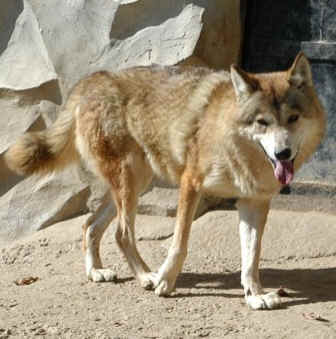 ing center for some of India's leading mountaineers and housed a pair of small museums, one to the history of mountaineering in the region and another to the just expeditions up Mt. Everest. They were simple little museums but had a treasure trove of memorabilia from photos to various items use on Everest expeditions. No matter how many people climbed Mt. Everest in modern times the accomplishments of the earliest summiteers will never be paralleled. The equipment they used was absurdly basic by today's standards and the sheer pioneering challenge they overcame just can't be equaled in my mind. It was amazing to me to find so many mountaineering artifacts tucked away in this modest little museum but an Everest Museum in Darjeeling couldn't be more appropriate. It was the home of Tenzing Norgay, the famous Sherpa who conquered Everest with New Zealander Edmund Hillary in 1953. A memorial to Tenzing Norgay stood on the hill where he was cremated, just above the mountaineering. After going through the museums and picking up souvenirs in the gift shop we paid our respects to the memorial site, marked with an imposing statue of the man himself. For decades neither Tenzing Norgay nor Edmund Hillary would admit who actually reached the summit first but after Tenzing died Hillary claimed he was the one. I'd always put my money on the Sherpa but since he isn't around to refute or corroborate Hillary's story I guess we will never really know for sure. ing center for some of India's leading mountaineers and housed a pair of small museums, one to the history of mountaineering in the region and another to the just expeditions up Mt. Everest. They were simple little museums but had a treasure trove of memorabilia from photos to various items use on Everest expeditions. No matter how many people climbed Mt. Everest in modern times the accomplishments of the earliest summiteers will never be paralleled. The equipment they used was absurdly basic by today's standards and the sheer pioneering challenge they overcame just can't be equaled in my mind. It was amazing to me to find so many mountaineering artifacts tucked away in this modest little museum but an Everest Museum in Darjeeling couldn't be more appropriate. It was the home of Tenzing Norgay, the famous Sherpa who conquered Everest with New Zealander Edmund Hillary in 1953. A memorial to Tenzing Norgay stood on the hill where he was cremated, just above the mountaineering. After going through the museums and picking up souvenirs in the gift shop we paid our respects to the memorial site, marked with an imposing statue of the man himself. For decades neither Tenzing Norgay nor Edmund Hillary would admit who actually reached the summit first but after Tenzing died Hillary claimed he was the one. I'd always put my money on the Sherpa but since he isn't around to refute or corroborate Hillary's story I guess we will never really know for sure.
Leaving the Mountaineering Center we found ourselves inside the small Darjeeling Zoo but what the zoo lacked in si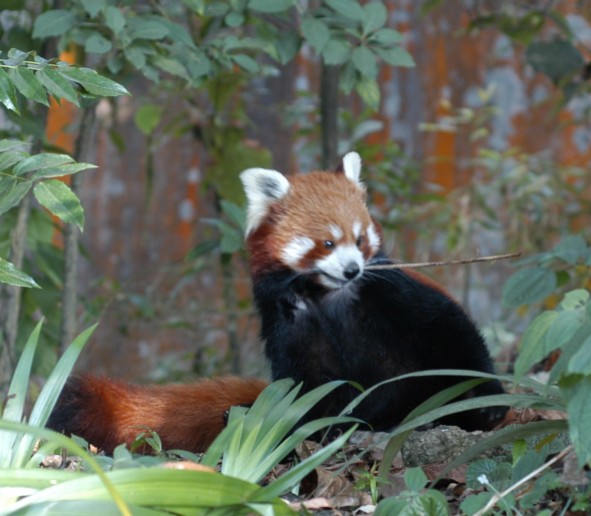 ze it made up for with a rare collection of endangered Himalayan animals, many of which were being successfully bred through the zoo breeding center. The highlight for me was the stunning pair of Snow Leopards, an extremely elusive cat that is on the World Wildlife Federations list of most endangered species. A cold-climate cousin in the leopard family the cat's white spotted coat and fluffy long tail make it very attractive, a feature that sadly contributes to its demise. The zoo had other leopard breeds as well and the habitats were fairly large and well-maintained. The habitat for the Siberian Tiger was particularly large and dense with greenery so we didn't get to see the cat but it was good to see that it had room to roam. At the top of the zoo we took a brief rest on a bench and were approached by a group of Sikkimese tourists that wanted to have their photo taken with us. It seemed that we were as interesting as the zoo animals! There were a number of foreigners around Darjeeling but not droves of us. Working our way through the park we passed a number of Tibetan Wolves, another rare species being bred at the Darjeeling zoo. Next to the wolves were a breed of primates that were being pushed into rarity by their "inability" to get along with humans. The intelligent faces on primates always made me feel the saddest about their captive state. Near the zoo entrance we got a good look at the lone Himalayan Black Bear as it rested its head on a large stump and later stood up to reveal its golden chest. On the opposite side of the entrance we caught a small red panda weaving through the foliage of its habitat, stopping for a moment to look at us for a photo. Other red panda exhibits followed and we were able to get a closer look at the odd little animal. Not really related to the panda, the red panda is its own species and only remotely resembles the larger bear. They were about the size of a raccoon with auburn colored fur, white markings on the face, and stripes down their fluffy long tails but the most intriguing thing about these little "bears" was their incessant aerobic activity and "smiling" faces. They just never seemed to stop moving, unless they were asleep, and their faces looked like they were laughing. ze it made up for with a rare collection of endangered Himalayan animals, many of which were being successfully bred through the zoo breeding center. The highlight for me was the stunning pair of Snow Leopards, an extremely elusive cat that is on the World Wildlife Federations list of most endangered species. A cold-climate cousin in the leopard family the cat's white spotted coat and fluffy long tail make it very attractive, a feature that sadly contributes to its demise. The zoo had other leopard breeds as well and the habitats were fairly large and well-maintained. The habitat for the Siberian Tiger was particularly large and dense with greenery so we didn't get to see the cat but it was good to see that it had room to roam. At the top of the zoo we took a brief rest on a bench and were approached by a group of Sikkimese tourists that wanted to have their photo taken with us. It seemed that we were as interesting as the zoo animals! There were a number of foreigners around Darjeeling but not droves of us. Working our way through the park we passed a number of Tibetan Wolves, another rare species being bred at the Darjeeling zoo. Next to the wolves were a breed of primates that were being pushed into rarity by their "inability" to get along with humans. The intelligent faces on primates always made me feel the saddest about their captive state. Near the zoo entrance we got a good look at the lone Himalayan Black Bear as it rested its head on a large stump and later stood up to reveal its golden chest. On the opposite side of the entrance we caught a small red panda weaving through the foliage of its habitat, stopping for a moment to look at us for a photo. Other red panda exhibits followed and we were able to get a closer look at the odd little animal. Not really related to the panda, the red panda is its own species and only remotely resembles the larger bear. They were about the size of a raccoon with auburn colored fur, white markings on the face, and stripes down their fluffy long tails but the most intriguing thing about these little "bears" was their incessant aerobic activity and "smiling" faces. They just never seemed to stop moving, unless they were asleep, and their faces looked like they were laughing.
After the zoo we just set off towards Darjeeling on foot. It was a long slow walk up hill but we broke up the trip with a sto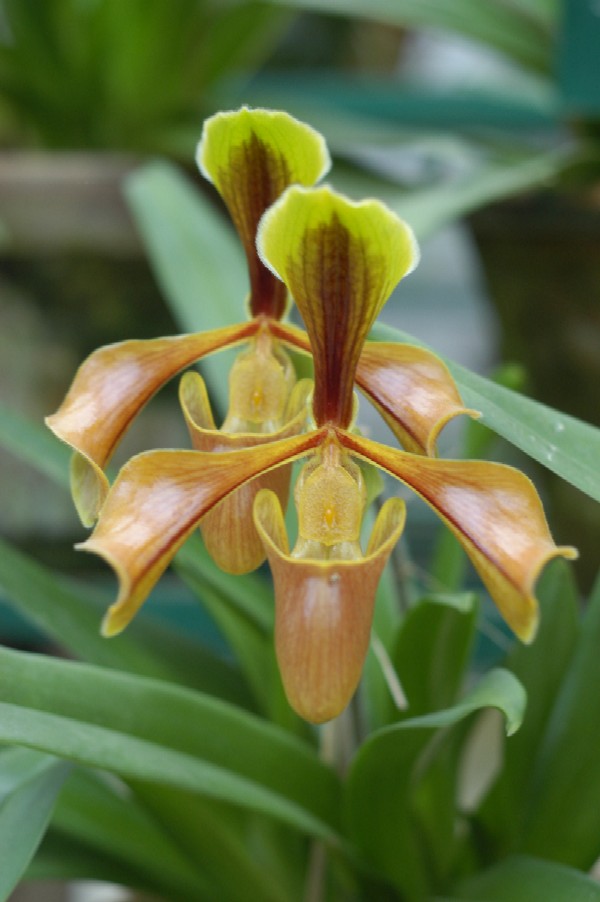 p at the Hot Stimulating Cafe, a tiny one-room place with a patio that looked out over the mountains. We had some hot drinks and snacks before continuing on our way. The road took us past some colonial government building turned high-end hotels and the well preserved St. Andrew's Church before letting us out onto the large Chowrasta Plaza at the top of Darjeeling. It was a popular place for people to just hang out and was surrounded by a number of cafes, a very good bookstore, and some souvenir shops. Another road left the plaza along the east side of the ridge, wrapping around the back of the peak and providing spectacular views of Mt. Kanchendzonga. Heading out of the far end of the plaza took us to a fork in the road with the right side leading down Nehru Road (aka The Mall) where there was a large concentration of souvenir shops and more cafes. Up and down the Mall and around the plaza were our most frequented places in Darjeeling. Back at our hotel we chatted with a British couple that we had met before and learned that the ropeway had been closed because one of the cars had fallen and killed two tourists. p at the Hot Stimulating Cafe, a tiny one-room place with a patio that looked out over the mountains. We had some hot drinks and snacks before continuing on our way. The road took us past some colonial government building turned high-end hotels and the well preserved St. Andrew's Church before letting us out onto the large Chowrasta Plaza at the top of Darjeeling. It was a popular place for people to just hang out and was surrounded by a number of cafes, a very good bookstore, and some souvenir shops. Another road left the plaza along the east side of the ridge, wrapping around the back of the peak and providing spectacular views of Mt. Kanchendzonga. Heading out of the far end of the plaza took us to a fork in the road with the right side leading down Nehru Road (aka The Mall) where there was a large concentration of souvenir shops and more cafes. Up and down the Mall and around the plaza were our most frequented places in Darjeeling. Back at our hotel we chatted with a British couple that we had met before and learned that the ropeway had been closed because one of the cars had fallen and killed two tourists.
While the restaurant in our hotel was pretty good we got tired of eating in the same place and explored other options. During the day we liked to stop in one of the cafes along the Mall. Our most popular place in the beginning was Glenary's, a combined restaurant, cafe and bakery, but the service was frustratingly slow and the food not that great so we frequented it less towards the end except when we wanted cake. Towards the end of our stay we discovered Keventer's Snack Bar at the end of the Mall. Keventer's was a deli with a rooftop snack bar that had great views. We initially tried it for breakfast and with their deli roots that meant meat, meat, and more meat. 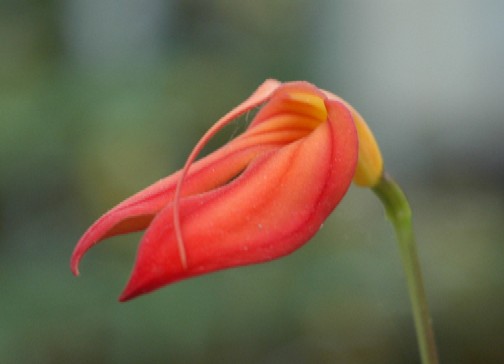 A little yellow dollop on the side was the eggs. We could only do that every so often because it was just too much but during the afternoon it was still a great place to grab a snack and have a coffee. For dinners we tried some of the small Tibetan cafes that served up thukpa and momos like Devekas Restaurant or Kunga next door. All in all it was pretty basic food but hearty and quite tasty. A little yellow dollop on the side was the eggs. We could only do that every so often because it was just too much but during the afternoon it was still a great place to grab a snack and have a coffee. For dinners we tried some of the small Tibetan cafes that served up thukpa and momos like Devekas Restaurant or Kunga next door. All in all it was pretty basic food but hearty and quite tasty.
Our hotel had turned out to be a pretty good bargain for the quality of the room and service but it turned out that they were doing construction on the top floor during the day and sometimes it lasted a bit late or started early. We looked into another room on the front side of the hotel but it was a corner room and more windows meant more cold so we stayed where we were. Instead we looked around at other hotels but never found anything that motivated us to make a move. The Hotel Dekeling was probably our next choice but we'd seen a rat crawl across the floor of one room they showed us and that was a off putting. The Darjeeling Club, an old colonial relic above the Mall, sounded appealing but the rooms were drafty and dated and the views were obscured by a railing. The rooms had fireplaces but it would have taken a lot of wood to keep such large room warm, which seemed wasteful, and the rooms were too expensive. So, in the end we stayed at Hotel Seven Seventeen.
The shopping in Darjeeling was some of the best we'd seen in our travels with a great pooling of Indian, Nepalese, and Tibetan crafts and souvenirs packed into at least a dozen shops. We didn't buy anything because we were planning to come back through Darjeeling but we made the rounds to see what prices were like and made note of things we wanted to buy when we came back. There were pashminas, tapestries, statues, jewelry, Gurkha knives, rugs and more.
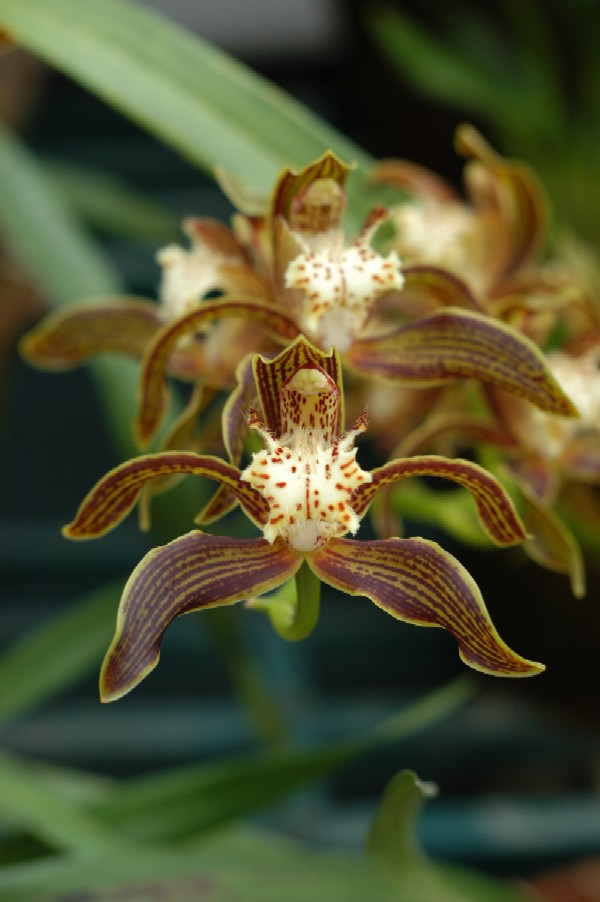 The weather gradually turned worse while we were in Darjeeling but it was still pleasant. The overcast sky obscured the Himalayan views but the lively atmosphere of Darjeeling remained. Even with the gray sky we enjoyed a morning visiting the Lloyd Botanical Garden. In the winter we didn't have high hopes of what we would find but the guidebooks mentioned an orchid house so we had to check it out. The gardens themselves were pleasant but there wasn't much in bloom. The orchid house, however, was full of blooming flowers. We were really surprised. The varieties were mostly different cymbidiums and paphiopediliums, all in shades of greens and yellows, but there was one bright little example of a red masdavallia. A list on the wall of the green house showed that they turned out quite a collection of orchids throughout the year. Who knew the Himalayas was such a prolific orchid region? The weather gradually turned worse while we were in Darjeeling but it was still pleasant. The overcast sky obscured the Himalayan views but the lively atmosphere of Darjeeling remained. Even with the gray sky we enjoyed a morning visiting the Lloyd Botanical Garden. In the winter we didn't have high hopes of what we would find but the guidebooks mentioned an orchid house so we had to check it out. The gardens themselves were pleasant but there wasn't much in bloom. The orchid house, however, was full of blooming flowers. We were really surprised. The varieties were mostly different cymbidiums and paphiopediliums, all in shades of greens and yellows, but there was one bright little example of a red masdavallia. A list on the wall of the green house showed that they turned out quite a collection of orchids throughout the year. Who knew the Himalayas was such a prolific orchid region?
|
SRI LANKA
Colombo
Oct 25
Oct 26
Oct 27-29
Nuwara Eliya
Oct 30
Oct 31
Kandy
Nov 1-5 (1)
Nov 1-5 (II)
Polonnaruwa
Nov 6
Sigiriya & Dambulla
Nov 7
Colombo
Nov 8
INDIA
Ft.Cochin
Nov 9-15 (I)
Nov 9-15 (II)
Nov 16
Nov 17-18
Madurai
Nov 19
Nov 20
Tiruchirapalli
Nov 21
Nov 22
Nov 23
Chennai
Nov 24
Nov 25-26
Nov 27-28
Ft.Cochin
Nov 29
Lakshadweep
Nov 30-Dec 4 (I)
Nov 30-Dec 4 (II)
Trans-India Train
Dec 5-7 (I)
Dec 5-7 (II)
Siliguri
Dec 8
Darjeeling
Dec 9
Dec 10-13
Dec 14
Sikkim
Dec 15
Dec 16-20
Dec 21-23
Dec 24
Dec 25
Darjeeling
Dec 26
Dec 27-Jan 2
Siliguri
Jan 3
Jaigon
(Bhutan)
Jan 4
Kolkata
Jan 5-6
THAILAND
Bangkok
Jan 6-13 (I)
Jan 6-13 (II)
Jan 6-13 (III)
|

